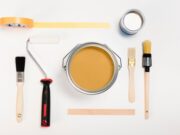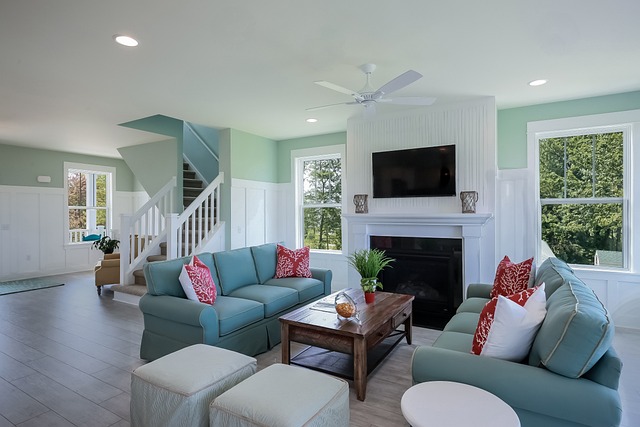Your living room is more than just a place to relax, it’s paint color is a reflection of who you are, your style and your personality.
That is why choosing the perfect color combinations can totally transform your living room space into a haven of comfort and beauty.
With a little know-how and some inspiration, you can create a space that completely reflects your style and personality.
If you came across this article, then lady luck has smiled on you.
This article will explore practical tips and examples for combining paint colors to elevate your living room’s design.
Understanding Paint Color Theory and Psychology
Before we progress into the specific color combinations, it is very vital to understand the psychology behind colors.
Warm color tones like red, orange and yellow can create feelings of warmth and energy, which is perfect for a cozy atmosphere.
Cool tones like blue, green and purple promote relaxation and serenity, which is ideal for unwinding after a long day.
Let’s now begin with the basics of color theory.
The color wheel is your best friend when it comes to choosing complementary colors for your living room.
Whether you prefer a monochromatic look or want to experiment with contrasting hues, understanding color schemes like analogous, complementary, and triadic can help you create the perfect space.
Selecting the Base Paint Color
Think of the primary or base color as the star of the show, the one that sets the tone for the entire room.
Choosing a neutral base color for your walls sets the foundation for your living room’s color palette.
Consider existing furniture and decor when selecting a base color to ensure it complements your space easily.
Popular choices like soft greys, warm beiges, and calming blues provide a versatile backdrop for different design styles.
Choosing Contemporary Paint Colors
Once you have your base paint color in place, it’s time to introduce accent colors to bring dimension and personality to your living room.
These are the shades that bring out the best in your primary color by creating visual interest and balance.
Think about adding contemporary colors through furniture, accessories, and artwork to create a balanced look.
Whether you opt for bold pops of color or subtle accents, the key is to strike the right balance for a visually appealing space.
Creating Harmony and Balance
Getting the required harmony and balance in a room with multiple paint colors is all about thoughtful coordination.
Lighter paint colors can make a space feel airy and open while darker hues add warmth and coziness.
Look for ways to blend your chosen colors throughout the living room, whether it’s through furniture upholstery, throw pillows, or rugs.
Mixing patterns and textures can add depth to your color scheme and create a visually captivating space.
Furthermore, experiment with accent colors to strike the right balance, perhaps bold colors on the wall or subtle touches of darker shades in your decor.
The main goal is to create depth and dimension that makes your living room feel both spacious and comfortable.
Practical Examples of Color Combinations
Let’s now try to bring some of these concepts to life with some practical examples:
- Neutral Elegance: Pair soft beige walls with accents of cream and taupe for a timeless and sophisticated look.
- Bold and Vibrant: Come to terms with your adventurous side with bold hues like teal, mustard and coral for a living room that shows and exudes energy and personality.
- Natural-Inspired: Bring the outdoors inside with earthy tones like olive green, terracotta and warm browns for an inviting atmosphere.
- Monochromatic Chic: Create a modern and cohesive look using varying shades of the same colors, such as varying shades of grey or blue, for a sleek and sophisticated living room design.
However, before you commit to a color scheme, it is essential to test paint samples in your living room environment.
Paint small patches on the wall and observe how they look in different light conditions throughout the day.
Observe how the colors interact with your furniture, flooring and decor to ensure an overall fitting design.
Finally, stay up-to-date with seasonal color trends and consider incorporating them into your design for a fresh and current look.
Need more ideas? Explore resources for finding inspiration and guidance on paint color selection to help you.
Frequently Asked Questions
Q: How do I choose the right paint colors for my living room?
A: When selecting paint colors for your living room, consider the mood and atmosphere you want to create. Warm tones like beige, tan, or light grey can make a space feel cozy and inviting, while cool tones like blue or green can create a calming ambiance. Also, take into account the natural light in the room, the size of the space, and the existing decor when choosing paint colors.
Q: Can I mix different paint colors in the same room?
A: Yes, mixing different paint colors in the same room can add visual interest and depth to the space. You can create a color scheme by choosing a main color for the walls and then incorporating accents of complementary or contrasting colors through furniture, decor items, or accent walls. Just make sure the colors complement each other and flow well together.
Q: How can I test paint colors before committing to a full room makeover?
A: To test paint colors before fully committing, consider getting small paint samples and applying them to a small section of the wall or painting a large piece of poster board. This will allow you to see how the colors look in different lighting throughout the day and how they interact with other elements in the room. You can also use online tools or apps that allow you to digitally visualize different paint colors on your walls before making a final decision.
Final Thoughts
Combining paint colors for your living room is a fun and creative process that allows you to express yourself and your style.
Remember, there are no strict rules when it comes to color selection – trust your instincts and have fun experimenting with different combinations.
So unleash your inner artist and let your living room reflect the types of colors that make you feel right at home.
We hope these practical tips and examples have inspired you to confidently combine paint colors for your living room and create a space you love.






























